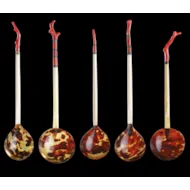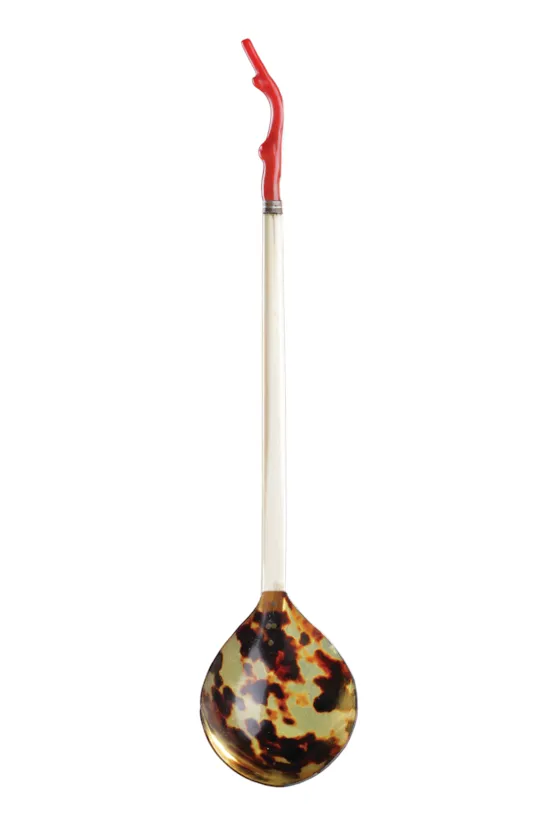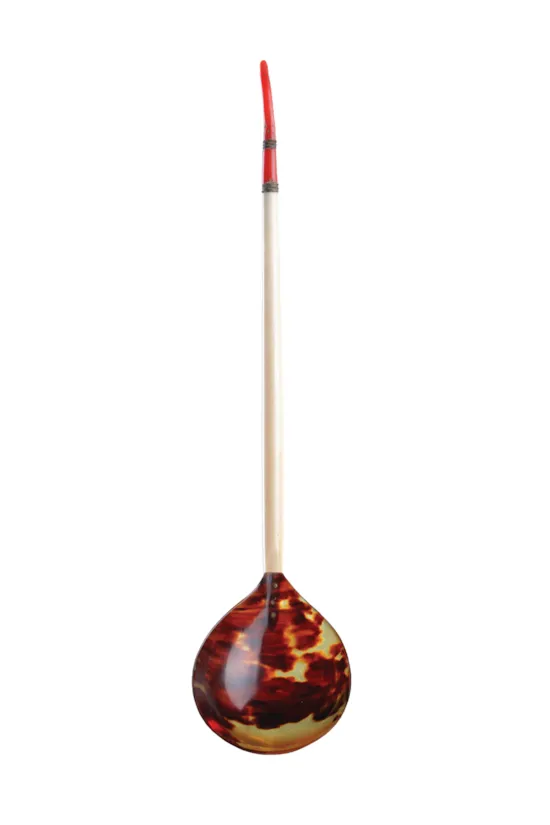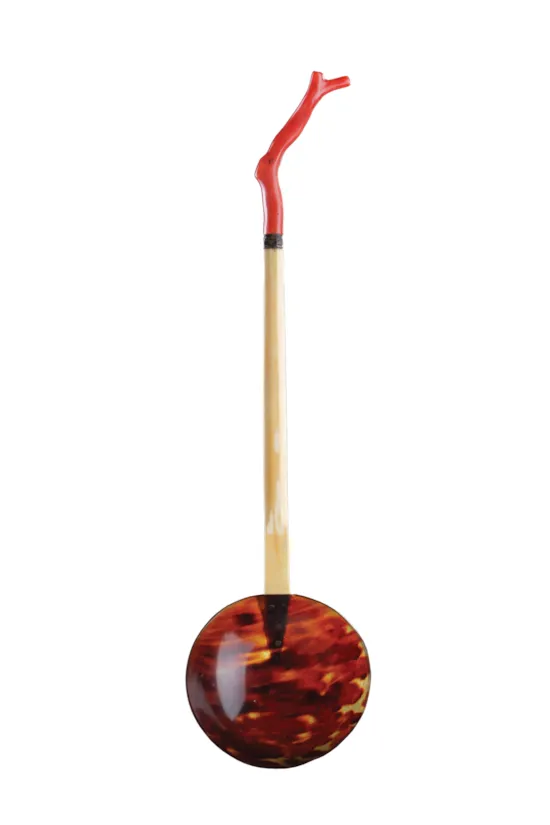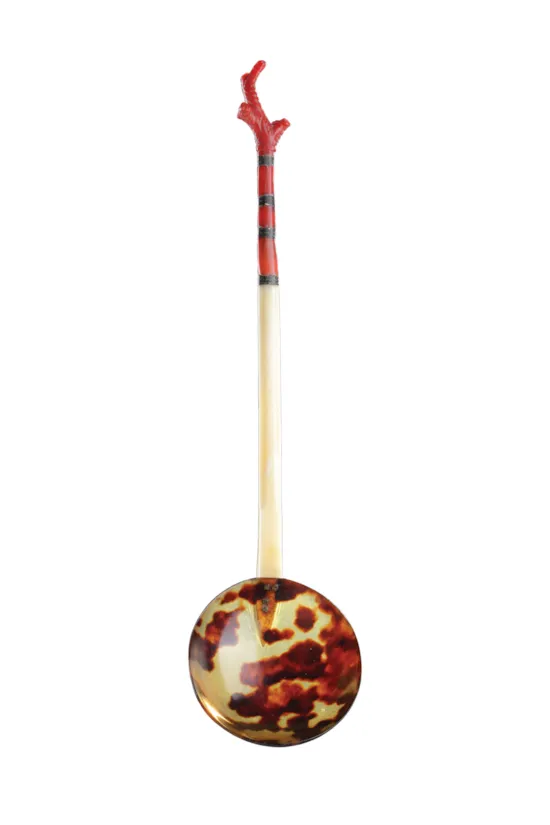Fine Collection of Five Ottoman Sherbet Spoons
A Fine Collection of Five Ottoman Sherbet Spoons Tortoiseshell Bowls Bone Stems Coral Finials with Silver and Enamel Segments
Late 18th - Early 19th Century
Size: min: 24.5cm long - 9¾ ins long / max: 25.5cm long - 10 ins long
Late 18th - Early 19th Century
Size: min: 24.5cm long - 9¾ ins long / max: 25.5cm long - 10 ins long
A Fine Collection of Five Ottoman Sherbet Spoons Tortoiseshell Bowls Bone Stems Coral Finials with Silver and Enamel Segments
Late 18th - Early 19th Century
Size: min: 24.5cm long - 9¾ ins long / max: 25.5cm long - 10 ins long
Late 18th - Early 19th Century
Size: min: 24.5cm long - 9¾ ins long / max: 25.5cm long - 10 ins long
Large sets of these beautiful spoons were produced for the use of the Grand Viziers at their meetings in the Divan ( the Kubbe Alti ) in the Topkapi Palace in Istanbul. The ladies of the Palace harem would also use such spoons for compotes of dried fruit known as ‘hoşaf’.
The use of forks for eating at table was a western European practice developed in the Renaissance and, although knives were used in the east for cutting up meat, spoons such as these would be used to help oneself from a communal dish of soup or stew. The nearer side of the spoon was being used for eating or sipping and the far side for helping oneself.
However, the use of spoons at table was frowned upon by strict orthodox Muslims who held that the prophet found his right hand quite adequate as a tool for eating.
The word sherbet comes from the classical Arab term for a cold sweetened drink, ‘Sharâb’ which is non-alcoholic. However, in the late middle ages this word developed its current Arabic sense of an alcoholic drink so a different word was needed for the non-alcoholic sweetened beverage and this emerged as ‘Sharbât’. The Turkish term sherbet comes from this more recent Arabic word. In the 16th century its use entered Italian cuisine under the name ‘Sorbetto’ derived from the Italian verb ‘Sorbire’ meaning to sip. This gave rise to the French ‘Sorbet’ and the Spanish ‘Sorbete’ all of which begin with an ‘S’ and not ‘Sh’. English is the only language, which took the word sherbet directly from the Turkish complete with its ‘h’.
The use of forks for eating at table was a western European practice developed in the Renaissance and, although knives were used in the east for cutting up meat, spoons such as these would be used to help oneself from a communal dish of soup or stew. The nearer side of the spoon was being used for eating or sipping and the far side for helping oneself.
However, the use of spoons at table was frowned upon by strict orthodox Muslims who held that the prophet found his right hand quite adequate as a tool for eating.
The word sherbet comes from the classical Arab term for a cold sweetened drink, ‘Sharâb’ which is non-alcoholic. However, in the late middle ages this word developed its current Arabic sense of an alcoholic drink so a different word was needed for the non-alcoholic sweetened beverage and this emerged as ‘Sharbât’. The Turkish term sherbet comes from this more recent Arabic word. In the 16th century its use entered Italian cuisine under the name ‘Sorbetto’ derived from the Italian verb ‘Sorbire’ meaning to sip. This gave rise to the French ‘Sorbet’ and the Spanish ‘Sorbete’ all of which begin with an ‘S’ and not ‘Sh’. English is the only language, which took the word sherbet directly from the Turkish complete with its ‘h’.
Fine Collection of Five Ottoman Sherbet Spoons
